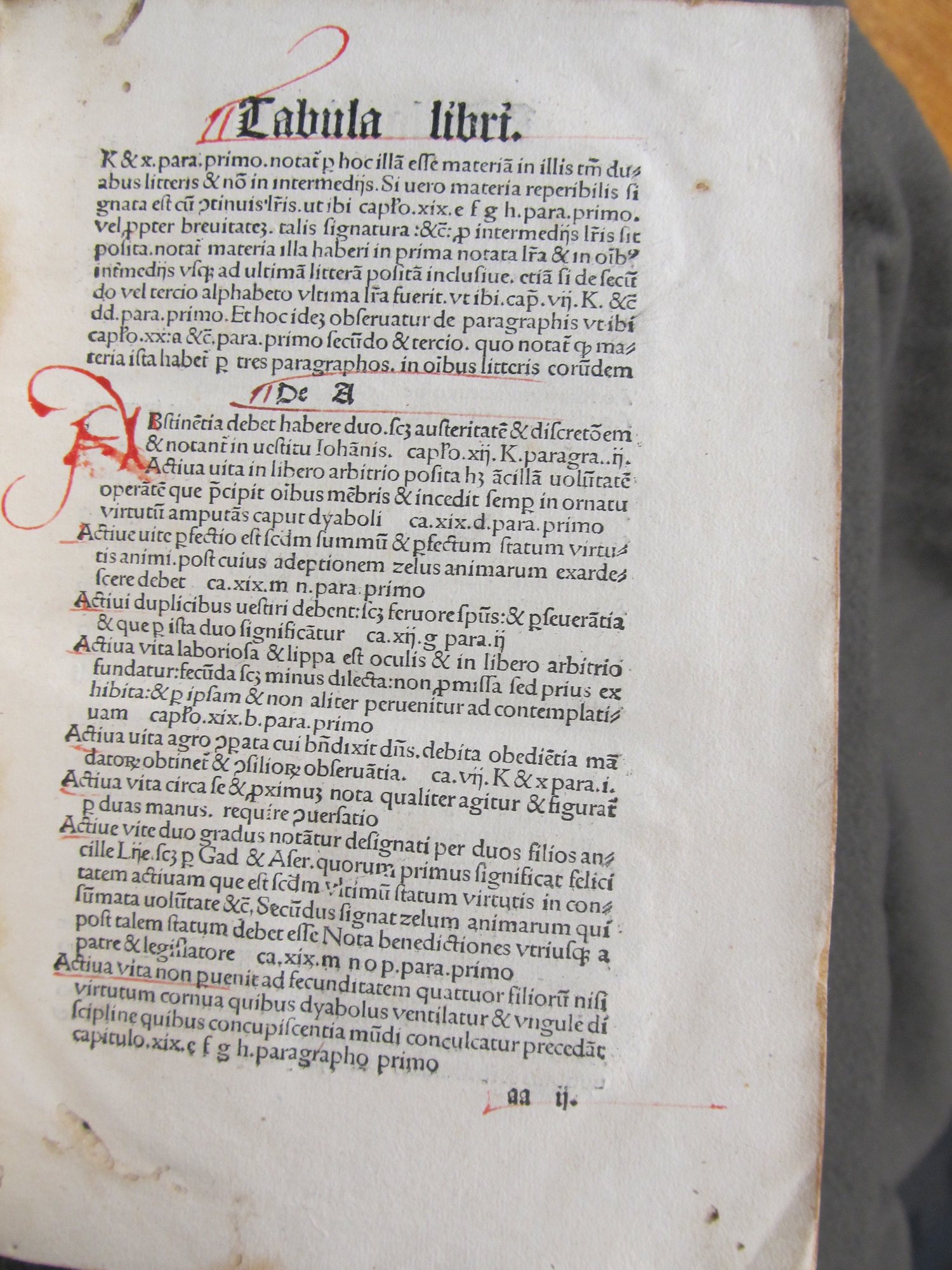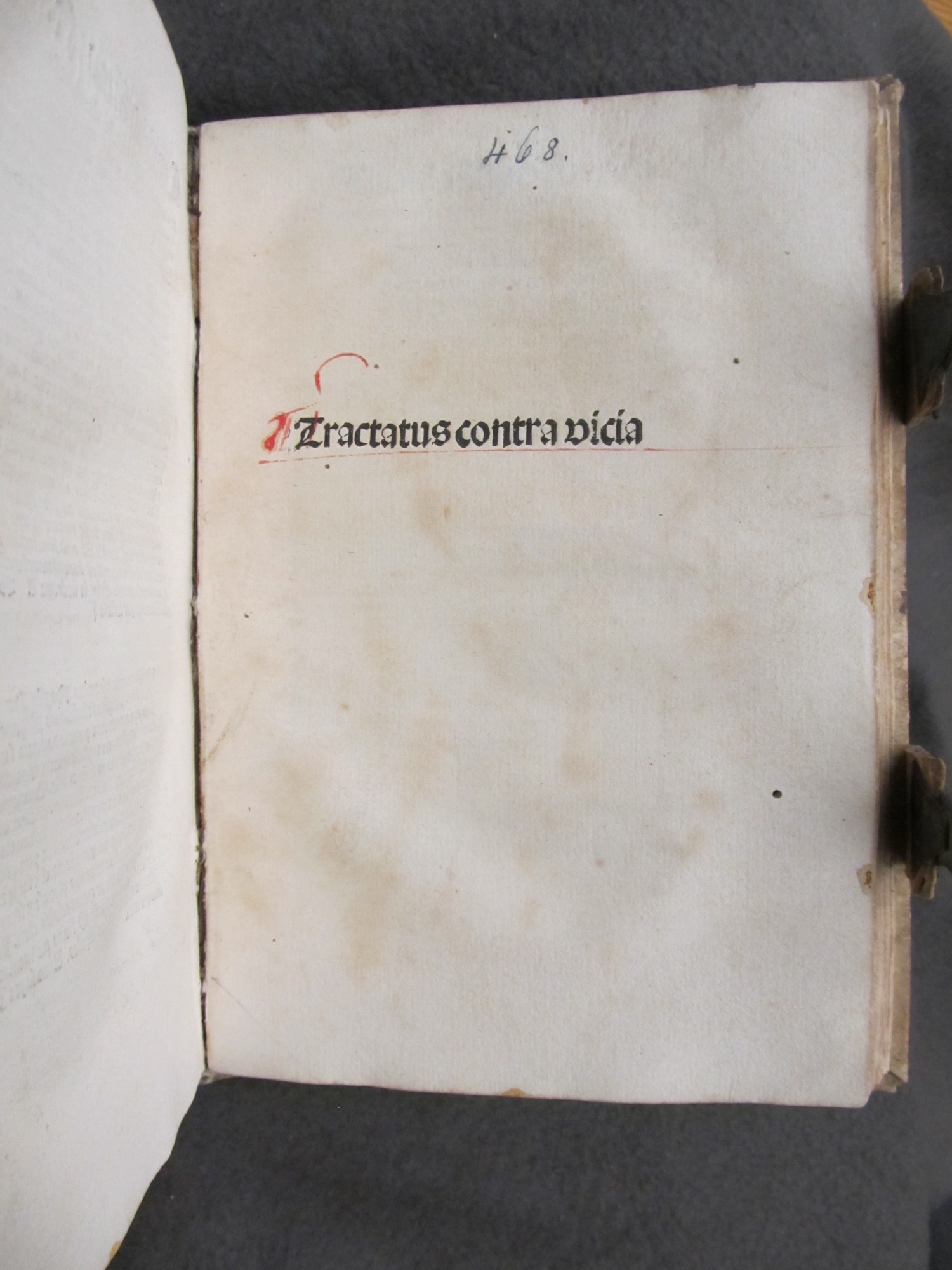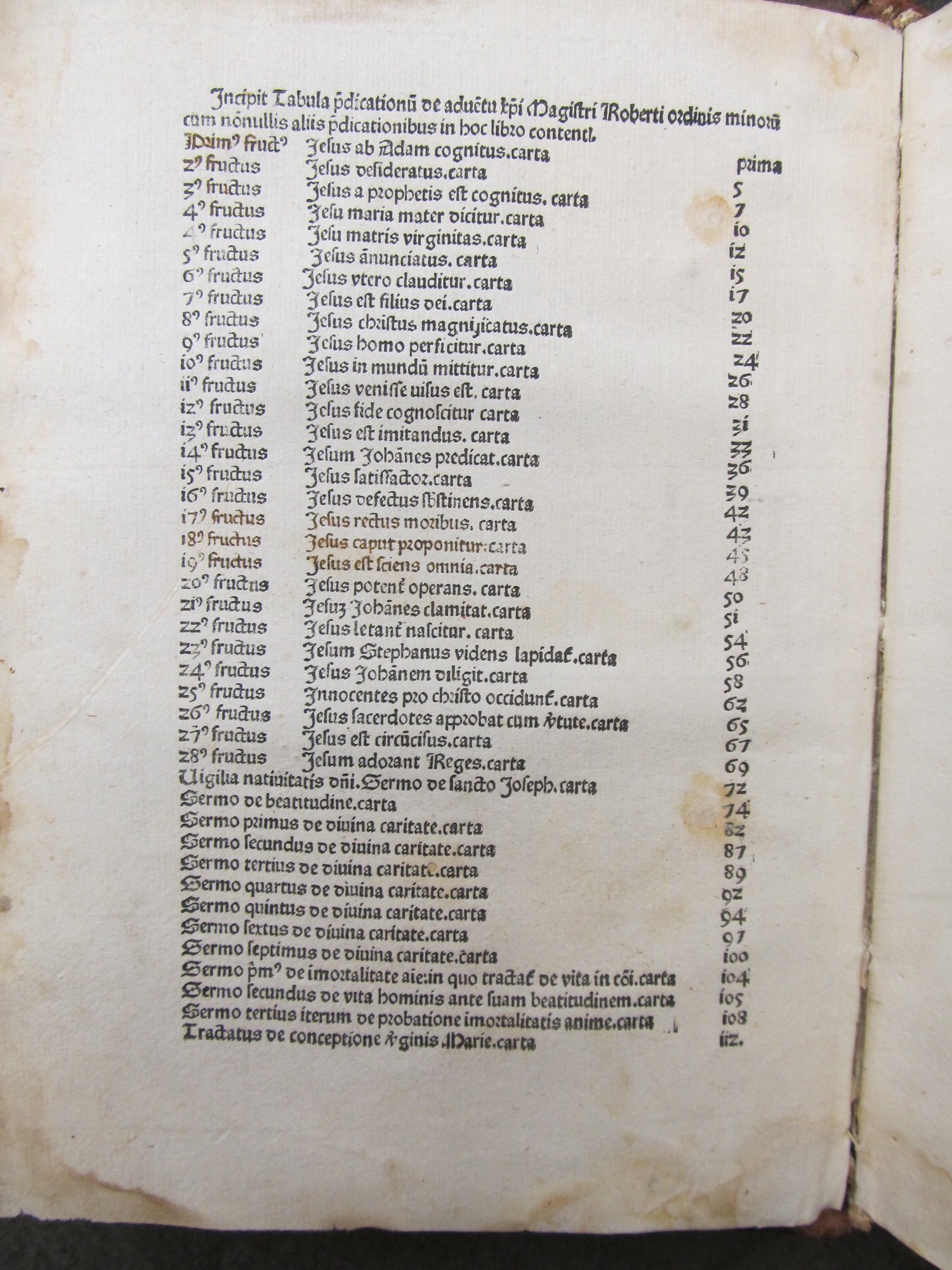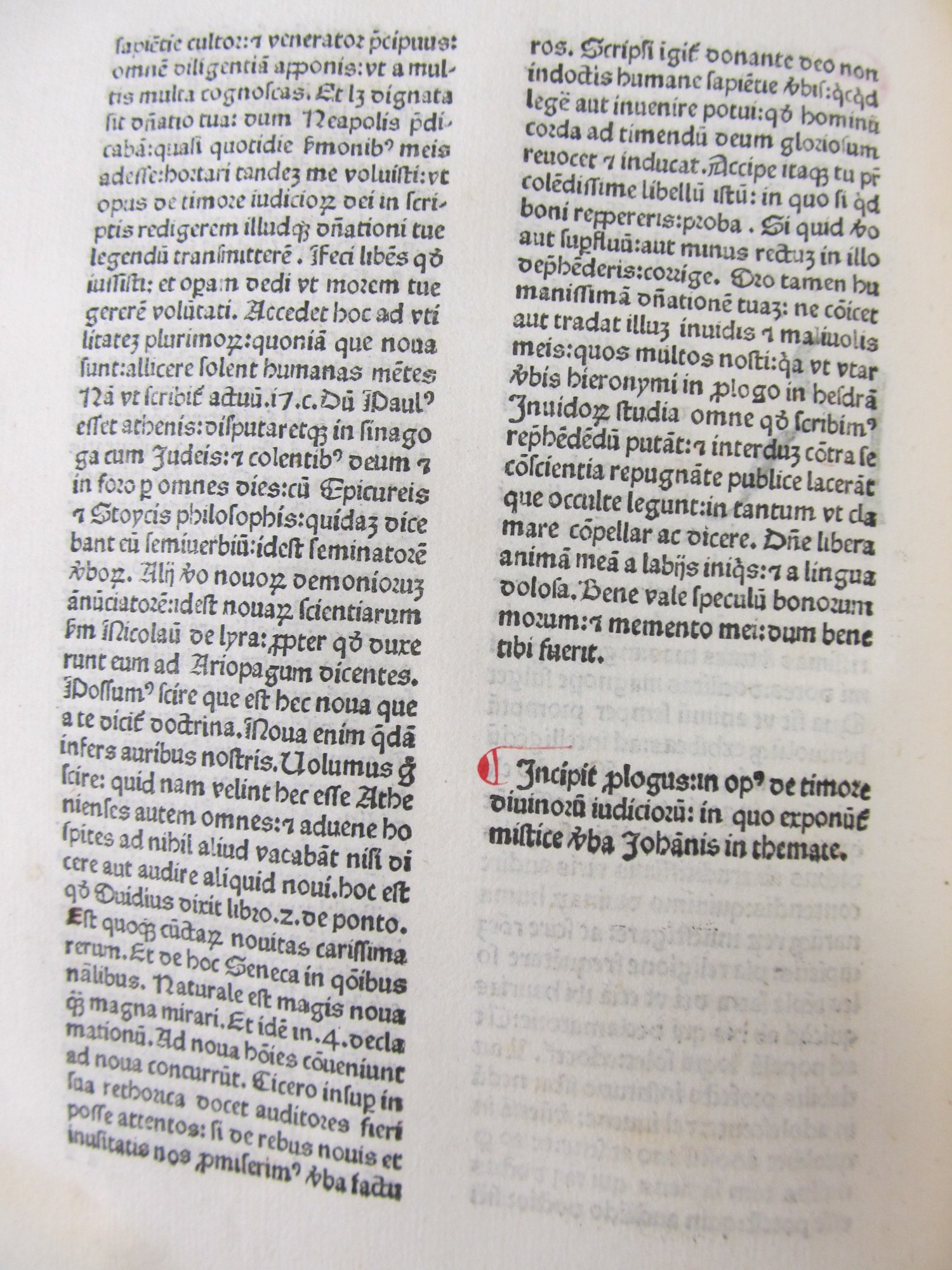Incunables in Special Collections
Sammelbände
Sammelband (pl. Sammelbände) means "gathered book" in German and is a term that refers to a book made up of multiple texts that were published separately. The practice of creating Sammelbände disappeared when custom bookbinding became a luxury rather than part of the normal process of buying a book, but it was once very common. These custom anthologies were often organized thematically but were also sometimes simply whatever books their owner happened to have to hand.
Modern collectors and libraries have sadly tended to disassemble Sammelbände into their component parts, but where they have survived, we can gain an insight into the minds of the people who owned and used these books. Three of the incunables in Special Collections are part of Sammelbände and they have been highlighted here in addition to being included in thematic groupings elsewhere in the exhibit.
A modern analogue to the Sammelband is perhaps the Pinterest board where each user can gather elements that they enjoy into a single virtual Sammelband. Are there other ways in which we gather our texts into one place?
Sammelband 1: Religious Tracts
BS1429 .A534 1499
This Sammelband combines three texts: De muliere forti by Albertus Magnus, Tractatus contra vicia, and a 1503 collection of tracts written by Henrik of Gorkum, Tractatus consultatorii venerandi magistris Henrici de Gorychum. The differences between the texts on a purely visible level are striking: only Albertus' De muliere forti is printed in roman type, whereas the others are both in blackletter. The difference is informative, as Heinrich Quentell was responsible for printing De muliere forti as well as Tractatus consultatorii venerandi magistris Henrici de Gorychum, suggesting that he may have expected to sell the two different books to two different audiences.
The book further combines two incunables with another book outside the official bounds of the incunable period. This may serve as a reminder that, useful though the 1500 boundary may be in terms of scholarship, it is not one that was experienced by medieval readers. A further division may be found in that because Henrik of Gorkum (c. 1378-1431) was a Thomist canon who taught at the University of Cologne and participated in the disputes between the followers of Albertus Magnus and Thomas Aquinas there, this Sammelband collects two different religious factions in one place.
Further details on De muliere forti can be found on the page on the Bible. Further details on Tractatus contra vicia can be found on the page related to printed sermons.
Sammelband 2: Sermons by Roberto Caracciolo
BX1756.C315 S46 1474
The collection of materials in this Sammelband is perhaps more intuitive than the other one: it combines sermons by the popular Franciscan preacher Roberto Caracciolo in a single document, namely Sermones de adventu, etc. and De timore iudicorium Dei. Further, both were printed jointly by Johann von Köln and Johann Manthen and within a year of one another, which makes them an intuitive set of books to combine into one volume.
Johann of Cologne and Johann Manthen were both originally from western Germany, hailing from Cologne and Gerresheim in modern North Rhine-Westphalia. After a brief collaboration with Wendelin of Speyer, Johann of Cologne would eventually take over Wendelin's printing office with Johann Manthen managing the office while Johann of Cologne handled sales and distribution. They did quite well together and were eventually able to compete with Nicholas Jenson.
Information on Roberto Caracciolo can be found on the page related to printed sermons.



